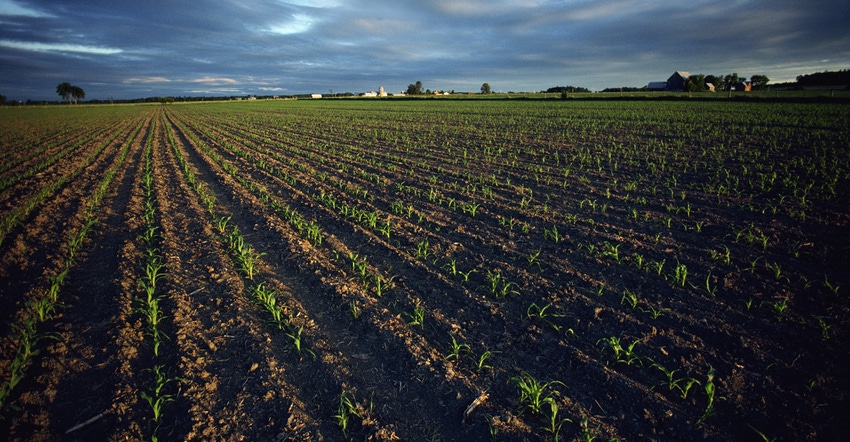
Last week’s move by nearby corn and soybean futures to the highest levels in nearly a decade was impressive by any measure.
New crop contracts also reached fresh highs, blowing through spring objectives I posted in mid-March, even challenging targets for summer gains suggested back then by price charts and my models of supply and demand.
But there were a few warning signs in the tea leaves as well. May and November soybeans along with July and December corn reversed lower April 27 after posting a new contract tops amid overbought conditions. Though corn stocks in position remained nil, squeezing shorts as May went into delivery, 66 lots of soybeans were registered Thursday and put out Friday and again on Monday. Old crop soybean contracts tried to bounce back Monday but failed again with more reversals.
Is this it for the spring rally?
In the short term, the pace of planting and USDA’s upcoming May 12 World Agricultural Supply and Demand Estimates could determine whether this phase of the rally still has legs. After that comes a long growing season and the government’s next reports on acreage and stocks June 30.
While we wait, here are my current targets for both old and new crop.
Old crop corn: May corn hit $7.4625 on Friday’s first notice day surge, and advanced as far as $7.5825 Monday before reversing lower again. For perspective, one way I select target ranges is by converting average cash price projections into a futures projection, then extrapolating rallies based on probabilities. Normally, my selling ranges are one and two standard deviations above the mean, or average projected price. This covers 95% of the expected distribution for the crop. The top of that range is $6.38. Friday’s move took nearby corn above three standard deviations, or $7.04. Normally, only three days would be spent above that level, with four standard deviations at $7.68. July corn narrowed its discount to May, but stalled at $6.98 Monday after taking over the nearby position.
Long-term price charts support the idea the air is thin at this altitude. Friday’s move by May on the nearby chart breeched the $7.2725 final retracement objective of the selloff from 2012 all-time highs at $8.4375 to last year’s $3.0025 April low. With July taking over as the lead month, news not in the market now likely will be needed to challenge $8.
New crop corn: USDA’s next WASDE report includes its first monthly assessment of new crop supply and demand. The estimate should incorporate the surprisingly low planting intentions of 91.1 million acres and a yield of 179.5, numbers that likely won’t change until July’s update. With some demand rationing possible, carryout at the end of the 2021 marketing year may increase slightly. But average new crop futures prices still look like they should top $5. The target range of one to two standard deviations is at $5.70 to $6.33. December entered that space on the April 27 reversal, peaking at $5.93.
That move briefly surpassed a key milestone on what’s known as the perpetual chart for December. This chart looks only at December contracts over the years, providing a comparison for new crop value. The 50% retracement of the move from 2012’s $8.49 high to the 2016 low of $3.1475 was at $5.8175. If December can sustain that level, the 61.8% retracement is at $6.4475. That’s just a couple pennies from a target on the back-adjusted perpetual chart, which factors in rolls from one crop year to the next.
Old crop soybeans: May soybean futures briefly topped $16 before the April 27 reversal, ending the week just below the $15.7525 last retracement objective of the rally from the 2012 all-time high of $17.89 to the $7.91 trade war low from 2019. Like corn, this took old crop beans beyond three standard deviations of my projected average of $11.92, with four deviations at $15.81. That suggests rallies will need old crop stocks to tighten even more from USDA’s current projection of 120 million bushels.
New crop soybeans: While the market likely is buying some soybean acres, those won’t show up until the end of June. Look for USDA to lower its initial forecast of 2021 crop demand May 12 from winter projections due to lower production, which would ease carryout concerns a little. Still, the April 27 high of $13.8475 was very close to my two-standard deviation rally, which was at $13.87.
November futures have plenty of ceiling on the perpetual November chart after taking out the 50% retracement at $13.005. The next Fibonacci objective comes in at $14.1575, with a huge gap on the chart from $14.095 to $14.8575. On the back-adjusted November perpetual, the all-time high is at $14.9975 due to rolls.
Knorr writes from Chicago, Ill. Email him at [email protected]
The opinions of the author are not necessarily those of Farm Futures or Farm Progress.
About the Author(s)
You May Also Like






